Purpose of presentation
Coalition for Safe
Community Needle Disposal
Removing
Home Generated Sharps from
October 2009
Purpose of Presentation
Understand the current and future sharps disposal
problem in the U.S.
Recognize that removing needles from the household
trash is a shared responsibility among al stakeholders
involved: waste, sharps manufacturers,
pharmaceutical, retailers/pharmacies, PBMs, insurance
companies and patients.
Introduce you to existing programs and solutions for
safe needle disposal
Help you identify what would be the most effective
approach for your community
Sharps Outside of Medical Facilities
9 million Americans self inject prescription drugs.
1 in 12 homes in the U.S. houses a self-injector.
3 billion needle injections occur yearly outside of medical facilities.
2 billion from patients treating their own diseases the other 1 billion injections are illicit drugs users43% of Consumers do not use containers – Throw regular Household Trash.
20% - Use a sharps or biohazard container- Few take to a disposal facility.
12 % - Use coffee cans, soda bottles, detergent bottles, milk cartons 10 % - Plastic or glass containers, metal can, wrap in bag.
Most sharps end up in the municipal waste stream!
* Data Source: 2007 Roper Diabetes Study
Sharps Outside of Medical Facilities
Insulin Syringes = 1,425,000,000 units Pen Needles = 786,000,000 unitsLancets = Over 900 mil ion annual y. About 15-17% of the above are obtained via mail pharmacies The injection category (home uses) - (pen needles and syringes) are growing about 11-12% on an annual basis.
Other items not included are sharps via home infusion
(catheters, cannulas, infusion sets, etc)
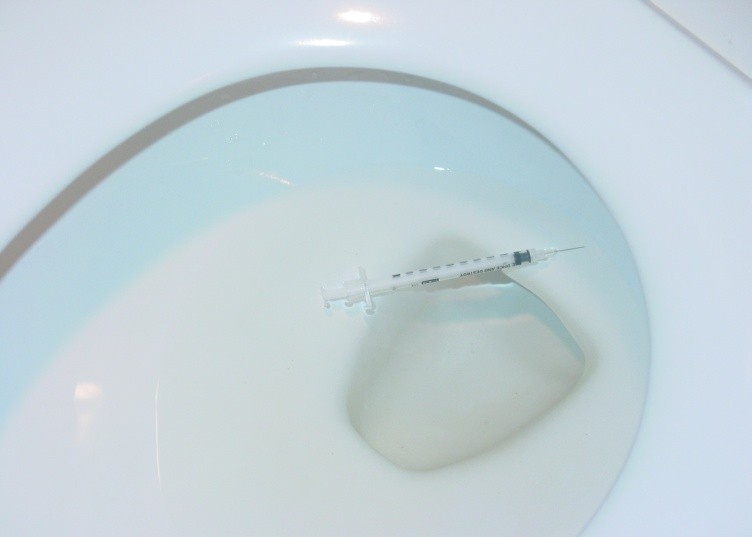
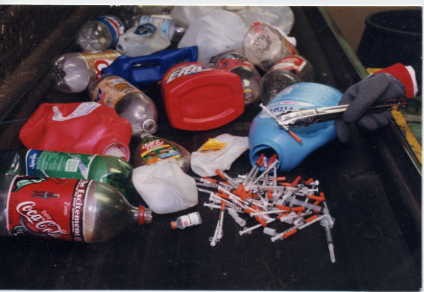
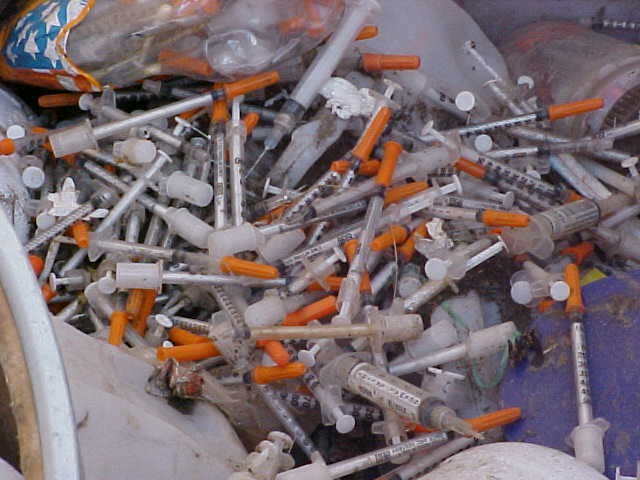
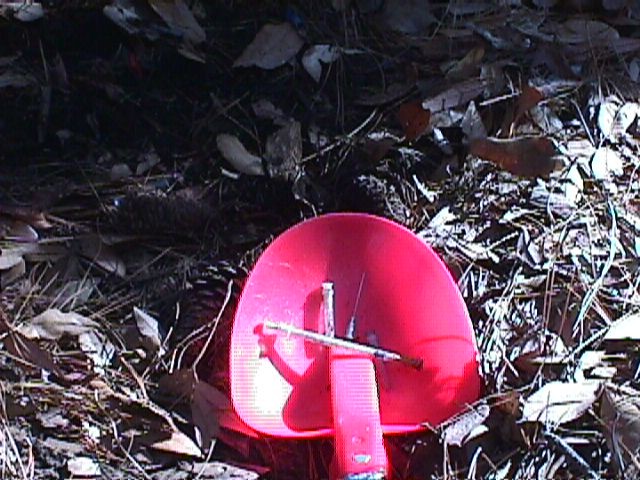
Improper Disposal: Many Forms/Locations
Why Billions of Needles?
Older population.
Increase in incidence of chronic il nesses.
Patient care pushed out of medical facilities.
Pharmaceutical industry pipeline of injectable drugs developed and marketed to treat chronic il nesses.
21 mil ion Americans have diabetes and incidence wil increase 165% over 50 years.
And The Problem Will Only Get Worse…
Unchecked, a number of factors wil
conspire to exponential y increase
needle use/waste/sticks and their
s ledee N 2xrs se
…Unless We Work Together on Solutions
Household residents
– (family members, guests, pets)
General population in public venues
– (airports, casinos, hotels, parks, restaurants, stadiums, stores)
Workers in various service industries
– Environmental Services (janitorial, recycling, waste disposal,
water treatment)
– Hospitality (hotels, theme parks, stadiums, casinos, airports)
– Retail (stores, restaurants)
Reaction to Needles in Public Waste
Needles in public waste are of unknown origin
Needles of unknown origin must be considered as potential y dangerous infectious material
Needles in public waste create exposure to accidentalneedle-stick injuries
Needles discarded by self-injectors have historical y
been non-regulated by state and federal legislation
Due to increasing visibility of public health safety issue, state and federal legislation is emerging
"Cost" Impact of Accidental Needle Sticks
Physical/emotional trauma to individual
Loss of work productivity and income
Cost of diagnostic testing and treatment
Transmission of pathogenic diseases
Life altering il nesses (HIV, HEP B & C)
Life-long consumption of medical care
Lawsuits, litigation and settlements
Manufacturers of Home Care Injectibles
Arthritis: Humira and Enbrel (Abbott, Amgen)
Diabetes: Insulin, Byetta, Symlin and Diagnostic (Eli Lilly,
Sanofi-Aventis, Novo Nordisk, Lifescan, Roche Diagnostics, Abbott, Bayer)
Hepatitis C & B/HIV: Interferon, Retrovir (Roche, Schering-Plough)
Growth Hormones: Nutropin, Humatrop, Tev-Tropin, Genotropin, Saizen,
Norditropin (Genentech, Pfizer, Gate, Serono, Novo)
Infertility: FSH, HCG, and HMG (Serono, Organon, Ferring)
Migraine: Imitrex (GlaxoSmithKline)
Multiple Sclerosis: Interferon (Serono, Teva, Biogen, Berlex-Schering AG)
Osteoporosis: Forteo (Eli Lilly)
Psoriasis: Raptiva, Amevive (Genentech, Biogen)
Others : Vitamin B12, Allergies, Blood Thinning, Veterinary Care
In Development: Hundreds of "designer" drugs in the pipeline
Solving the Problem
Gaining attention of industry, public and Federal
Development of grass-roots community disposal
Evolving State and Federal legislation.
Initiating help from Product Stewardship Institute to
develop safe disposal solution from industry
Advocate to al 50 States to create legislation re-writing
non-regulated medical waste regulations
Advocate development of reimbursement strategies
Advocate to industry stakeholders to develop needle
disposal solutions for al self-injecting drugs
With the help of PSI (Product Stewardship Institute)
determine nationwide disposal solution including cost
Medicare Reimbursement Bills S. 1312 and H.R. 2976
•On June 19, 2009, Senator Johnny Isakson (R-GA) and
Representative Mike Castle (R-DE) introduced S. 1312 and H.R.
2976, respectively. The bills are Federal Medicare Part D Bills that
will provide coverage for sharps containers, home needle
destruction devices, and a sharps-by-mail or similar program
because these are supplies associated with the injection of insulin.
•Co-sponsorship by Senator Ted Kaufman (D-DE) and
Representatives Diane DeGette ( D-CO) and Mark Kirk (R-IL) and
is anticipated by Xavier Bacerra (D-CA) – all chairpersons of the
diabetes caucus.
•In September 2008, the CBO provided Senator Isakson's office
with a score of a similar bill. With that information in hand,
potential sponsors can now see a cost associated with these bills.
Medicare Part D Bill Language
SECTION 1. SHORT TITLE.
This Act may be cited as the ‘ Medicare Safe Needle Disposal Coverage Act
SEC. 2. COVERAGE OF CONTAINMENT, REMOVAL, DECONTAMINATION
AND DISPOSAL OF HOME-GENERATED NEEDLES, SYRINGES, [AND
OTHER SHARPS] THROUGH A SHARPS CONTAINER,
DECONTAMINATION/DESTRUCTION DEVICE, AND SHARPS-BY-MAIL
PROGRAM OR SIMILAR PROGRAM UNDER MEDICARE PART D.
(d) IN GENERAL.—Section 1860D–2(e)(1)(B) of the Social Security Act (42
U.S.C. 1395w–102(e)(1)(B)) is amended by inserting after ‘ regulations of the Secretary'' the following: ‘ and including devices approved for home use by the Food and Drug Administration for the safe and effective removal, through a a sharps container, decontamination and disposal of needles, a sharps-by-mail or similar program''.
(e) (b) EFFECTIVE DATE.—The amendment made by subsection (a) shall
take effect on January 1, 2010.
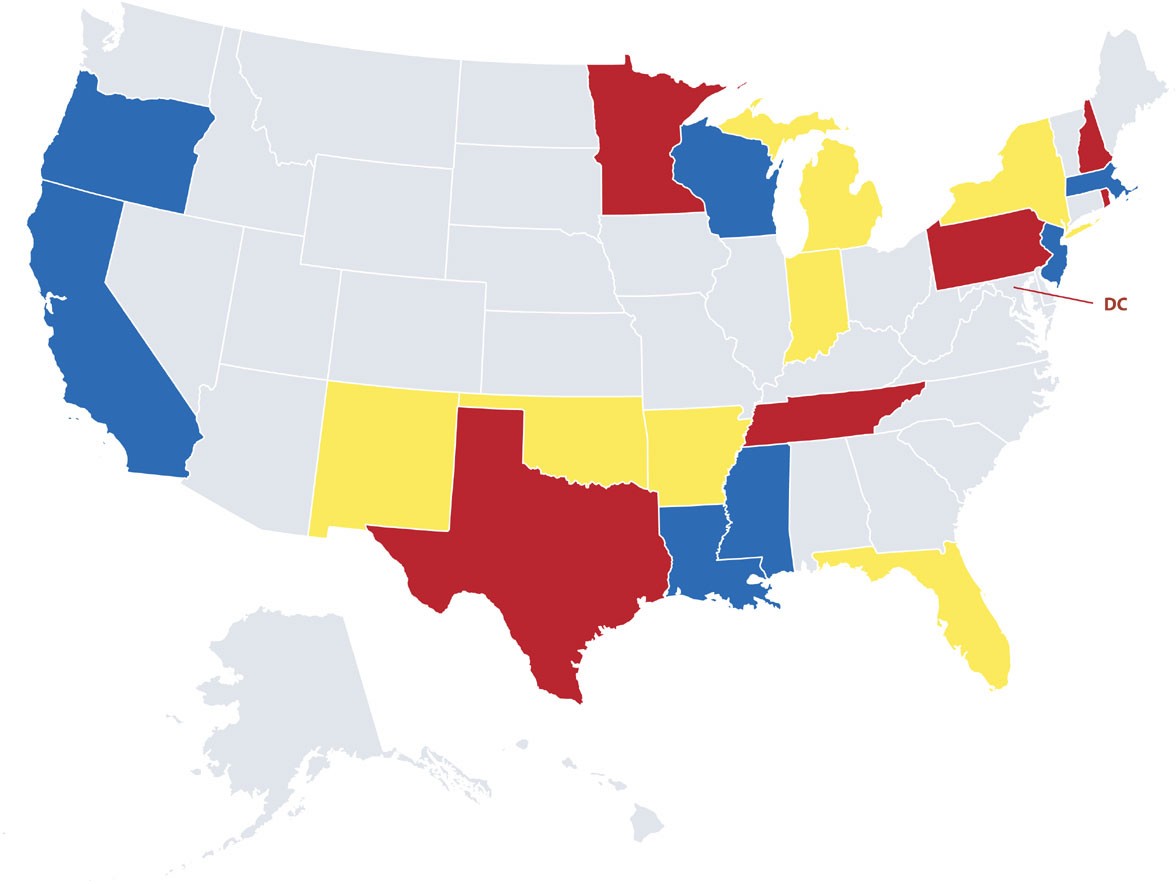
State Needle Disposal Legislation
removing needles
States interested
disposal solutions
States stil using
(household trash)
State Legislative Progress
Current State Legislation
(Ultimately removing needles from the household garbage)
Passed: California, Massachusetts, New Jersey, Louisiana,
Mississippi, Wisconsin, Oregon
Pending: New Hampshire, Pennsylvania
Considering Legislation in 2009/2010: Texas,
Tennessee, Florida, DC, New York, Maine, New Jersey
Considering Policy Changes: Rhode Island
Waiting on results of Massachusetts: Alabama, Georgia
Current Legislation
AB 283: Very broad product stewardship bil that
includes more than just needle disposal. Has a great
deal of opposition. Probably won't pass this year.
SB 486: This bil requires manufacturers to let the state
know what they are doing to support the safe
management of home-generated sharps. Passed and
signed by Gov. Oct. 11.
AB 501: A bil that was vetoed by Governor last year
but wil most likely be re-introduced this year. The
former bil required pharma manufacturers the issued
pre-fil ed syringes to provide either a sharps container
with information to the closest disposal or a sharps by
mail program. No cost to the patient. New bil is
promising to include al sharps, not just pre-fil ed.
Current Legislation
H.F. No. 1372: Every box of 90 or more syringes sold by
sharps retailers must be accompanied by a free sharps
disposal container that has adequate capacity to contain the
sharps purchased. Sharps containers must be provided by
the sharps manufacturers to the sharps retailers at no cost. The disposal of these containers is not clear in the
legislation. This creates a HUGE problem for the patient.
This bil only contains the sharps but doesn't solve the
problem of disposal.
Status: This bil was kil ed in the house.
Unfunded Mandates Already Passed
LA: SB 226: Passed in 2007. Requires that Dept of
Public Health enforce the rules. The new rule is no
person should knowingly place needles in the
household trash. The act shal be effective Sept. 1,
Status: NOTHING has been done to address this bil
by the state. Currently only one person in DPH
assigned to issue – no time or resources. Wil
present extended producer responsibility options to
LA as it develops in MA.
Unfunded Mandates Already Passed
NJ: AB 1852: Passed in 2006. A board from each
county shal prepare and adopt a sharps disposal
component as an amendment to the solid waste
management plan required by the "Solid Waste
Management Act." NO money was appropriated,
therefore no county has implemented a program.
The DPH has successful y added more hospitals
around the state to accept sharps from the
Status: Met with Rep. Conoway – Chairman of
Health Committee and discussing legislation similar to
Federal Medicare Bil requiring insurance companies
to cover needle disposal products to NJ patients.
Unfunded Mandates Already Passed
MS: SB 2730: Passed in 2008. Requires the DEQ to
develop and implement a program for the disposal of
home-generated medical sharps. The department
shal also develop and implement a state-wide
education program to promote the public's safe
disposal of home-generated medical sharps. The
program shal be developed no later than July 1, 2009
and implemented no later than Jan. 2010.
Status: MS DEQ and the MS Diabetes Association
developed and implemented a state-wide program that
includes drop-offs at 90 participating pharmacies and
fire stations, 3 local medical waste haulers pick-up the
waste free of charge and BD donated 3000 safe clips
for home bound patients. Huge educational campaign
was also developed.
Unfunded Mandates Already Passed
MA: Bill was a syringe access bill that included safe
disposal of all sharps. The responsibility to implement the
program fell into the hands of the DPH. There was no
money available. Many communities in the state have
implemented various programs, but overall the state has
not developed a state-wide needle disposal program. The
MA DPH and the Solid Waste divisions have been very
active in the PSI Needle Disposal meetings. MA has
agreed to be a model state and is working with PSI to
develop a program that is a "shared responsibility
program." The program should be developed by Jan. 2010
and implemented by July 2010.
Status: Coalition working with Produce Stewardship Institute
to develop a financially sustainable program using a shared
responsibility approach. A meeting was held July 20 to
discuss WM proposal for needle disposal program (see
Current Legislation
New Hampshire H.B. 1502 :
(a) No person shall place any needles, syringes, or other
medical instruments that are capable of puncturing the skin for the delivery of medication in any container used for the collection of solid waste, recyclable materials, construction and demolition debris, or compost.
(c) Any person who disburses, within this state, needles,
syringes, or other medical instruments that are capable of puncturing the skin for the delivery of medication shall participate in a take-back disposal program for needles, syringes, and other similar medical instruments which is approved by the department.
Status: Committee for Review.
Pennsylvania H.B. 594:
DEP will develop and implement a statewide program for the
safe, convenient and cost-effective disposal of home
generated medical sharps. The program may provide for a
variety of methods of disposal including:
1. use of mail-back programs
2. community-based drop-off sites
3. municipal HHW drop-off sites
4. special curb-side pick-up service, or
5. home needle destruction devices
The program shall include an educational component
designed to inform the public about safe disposal of home-
generated medical sharps and to promote the public's use of
the program for disposal of home-generated medical sharps.
Status: Removed from table May 6, 2009 and re-committed to
Appropriations May 6, 2009. Currently passed in House and is
Senate Health and Welfare Committee. Coalition will send
letter of support to members.
Working with citizen in Maine to identify the best
legislation for the state. Maine does not pass
unfunded mandates so we need to develop a
program and a solution.
Citizen is active with American Legion and has
befriended leaders in the Maine legislation and
government. He is setting up meetings in August to
meet with leaders to work on legislation for next year.
At this time Rep England would like to present a needle
disposal resolution. If there are programs in place the
Rep England wil introduce those programs at the time
the Resolution is read, as wel as have a briefing to
discuss the issue of safe needle disposal. Because there is not a solution in place that is financial y
sustainable he does not want to introduce legislation this
year that wil put the financial responsibility on the
patient, "not in this current economy."
Alabama, Florida, Tennessee:
Al states have expressed interest, but waiting to see if
solutions result from MA efforts.
Wisconsin and Oregon
Medical waste is medical waste – it does not matter where
it is generated. It must be treated the same in a hospital
Wisconsin: Most counties provide patients with a disposal
solution using local hospitals, pharmacies, clinics, etc. as
drop-off sites for sharps containers. Most programs
accept the needles in any puncture resistant container.
"The cost to the county to provide this service to
patients is so much cheaper that the cost of treating one
needle stick injury to my employee," says the Waste
Manager for Madison, Wisconsin.
Types of Needle Disposal Programs
Community-Centric Needle Disposal Programs
- Drop Box Col ection Sites- Residential Special Waste Pick-Up- Household Hazardous Waste Programs- Syringe Exchange Programs
Patient-Centric Needle Disposal Programs
- Disposal by Mail Programs- In-Home Individual Disposal Products
(needle destruction devices)
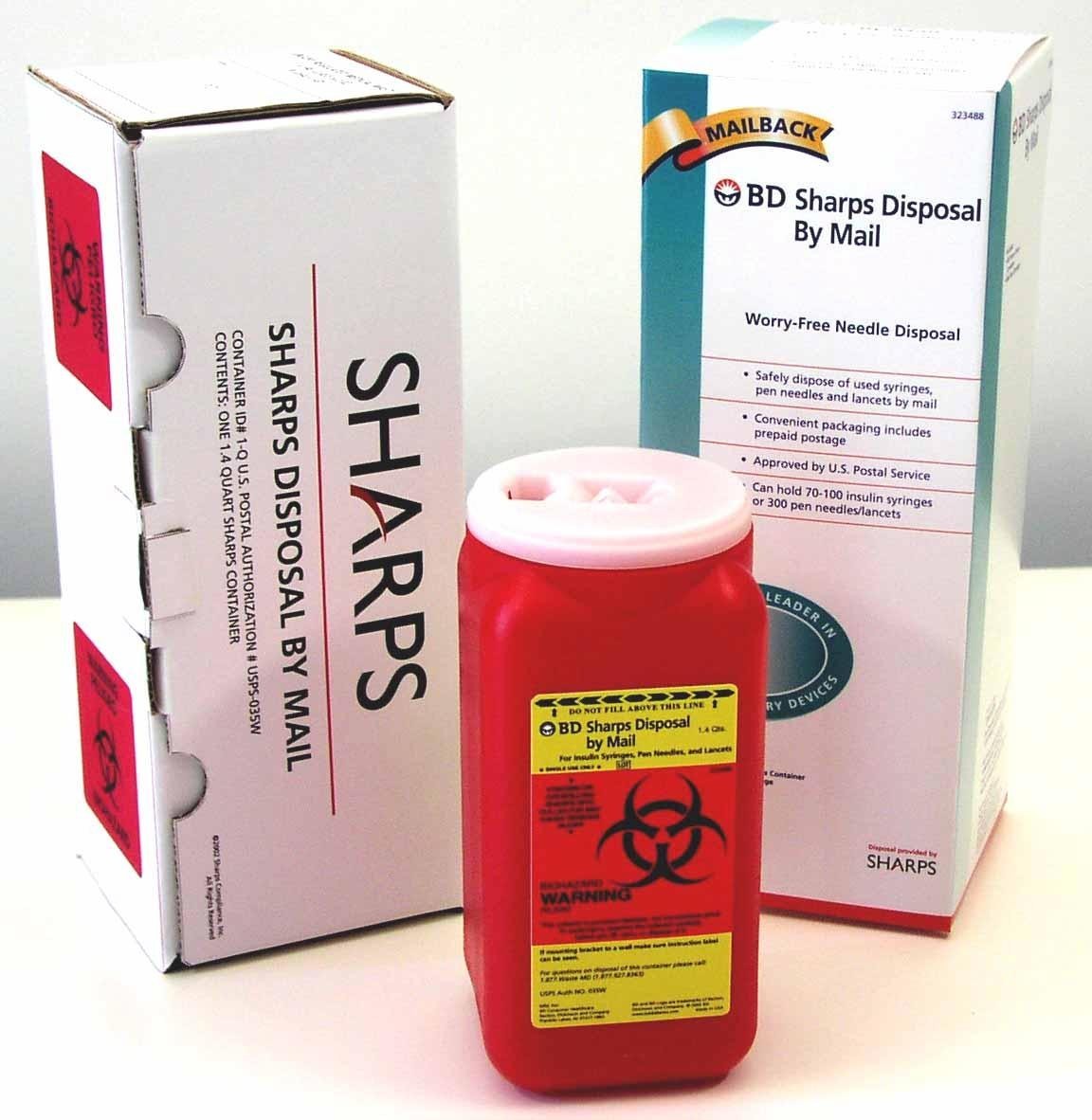
INDIVIDUAL HOME MAIL BACK
COSTS/ SHARPS CONTAINER
SHIPPING TO CONSUMER
TOTAL / PKG
RETAIL PRICE RANGE
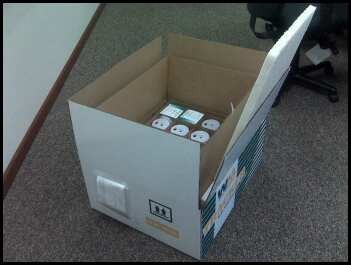
COMMUNITY CENTRIC
MAIL-BACKER SHIPPER - 20 UNIT
COSTS/ SHARPS CONTAINER
COMMUNITY CENTRIC SHIPPER MAIL-BACK
SHARPS CONTAINER @20 UNITS
AGGREGRATED SHIPPER BOX*
AGGREGATED MAILER @20 UNITS
Mailer includes USPS postage(transportation), disposal &documentation*HD PE
TOTAL / PKG @ 20 UNITS
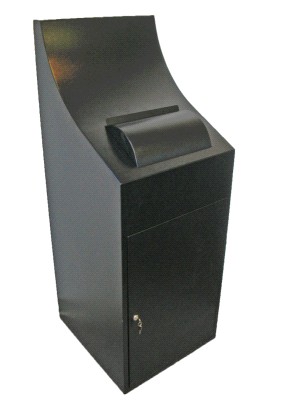
COMMUNITY CENTRIC KIOSK-20
MODEL COSTS
COMMUNITY CENTRIC KIOSK PICK-UP
SHARPS CONTAINER @20 UNITS
KIOSK (MONTHLY RENTAL)
AGGREGATED TUB @20 UNITS
Pick-up includes transportation, disposal &documentationKIOSK (PURCHASE)
TOTAL / PKG @ 20 UNITS
KIOSK AMORTIZED 12 MONTHS @ 20 UNITS
COMMUNITY CENTRIC KIOSK-40
MODEL COSTS
COMMUNITY CENTRIC KIOSK PICK-UP ONLY
SHARPS CONTAINER @40 UNITS
KIOSK (MONTHLY RENTAL)
AGGREGATED TUB @40 UNITS
Pick-up includes transportation, disposal &
TOTAL / PKG @ 40 UNITS
KIOSK AMORTIZED 12 MONTHS @ 40 UNITS
Rhode Island Community-based Program
5.3 Years 5,009,106 pounds of needles col ected58% col ected at CVS Locations
Site Locations
PharmaciesFire and Police StationsHealthcare Agencies (hospitals, clinics, nursing homes,
doctor offices, etc.)Government BuildingsTransfer Stations
Options for Site Funding
Pharmaceutical Company re-imbursement
Town funding (i.e.-San Francisco is increasing
residential disposal fees by .5% to cover sharps
Charge a col ection fee at point of purchase ($5.00
Sponsorship on Kiosk
Local Hospital Funding
Boone County, Indiana
County Waste Department provides containers to al
Boone County Residents FREE OF CHARGE.
Residents can obtain the containers at the County
Health Department.
When the container is ful , return it to the Health
Department where appropriate disposal wil be
accomplished at no charge and residents can obtain
another free container.
Annual cost for distribution and disposal is $604
Household Hazardous Waste Option
Pulaski County, Arkansas (Little Rock)
Pulaski County Residents can obtain a free container
from a participating pharmacy (provided by the county
Waste Department)
When the container is ful , residents return it to one
of five public works facilities (household hazardous
waste facilities) in the county at no cost.
Annual cost for disposal is virtual y nothing because
the needles are disposed of as hazardous waste not
Hospital Disposal Program
Riverview Hospital – Wisconsin Rapids, WI
Sharps Smart was implemented to help sharps users
fol ow the state law.
Self-injectors bring their fil ed sharps or household
container to the hospital lobby where it is disposed in
a large kiosk open 24/7.
Maintaining the program costs about $2500 per year
and is paid for by the Hospital Foundation.
Economic Cost of Diabetes
2007, the diagnosed population reached 17.5
mil ion, costs do not reflect undiagnosed
The total cost reached $174 bil ion up
$116 bil ion in direct medical expenditures $58 bil ion in indirect reduced productivity
Cost per Patient = $11,744/yr
2.3 times non-diabetes 1 in 5 health care dol ars are spent on a person with diabetes
Diabetes Supplies Account for Only 4% of the
$4,579 Pharmacy Spend for Insulin Users
Pharmacy Spend by Average Diabetes Patient
Diabetes Supplies
Diabetic Oral Agents
Other Prescriptions
Other equipment/supplies
Diabetes Supplies
includes injection devices
& BGM Test Strips
Note: does not include OTC Spend
Independent Analysis Conducted by Lewin Group, April, 2008
How the Coalition Can Help You
Introduce the community to existing programs and solutions
Introduce you to businesses that offer safe disposal solutions
Help educate the public and develop educational/informational materials
Encourage reimbursement at Federal Level
Coalition for Safe
Community Needle Disposal
Source: http://www.usmayors.org/mwma/uploads/NeedleDisposalpresentation.pdf
Final Report: The Recovery Partnership Review of Alcohol Treatment Services Mike Ward, Mark Holmes, Lauren Booker Executive summary 2. Four key findings 3. The current state of the alcohol treatment system 4. Other parts of the care pathway 5. The impact of the recovery agenda, peer support, and mutual aid 6. The commissioning process 7. The role of non-specialist services
National Inpatient Medication Chart Guidelines for use of the National Inpatient Medication Chart All nursing, medical and pharmacy staff and administrative and allied Audience: health staff who are authorised to access and use patient medication Exceptions: The National Inpatient Medication Chart is intended to be used as a record















